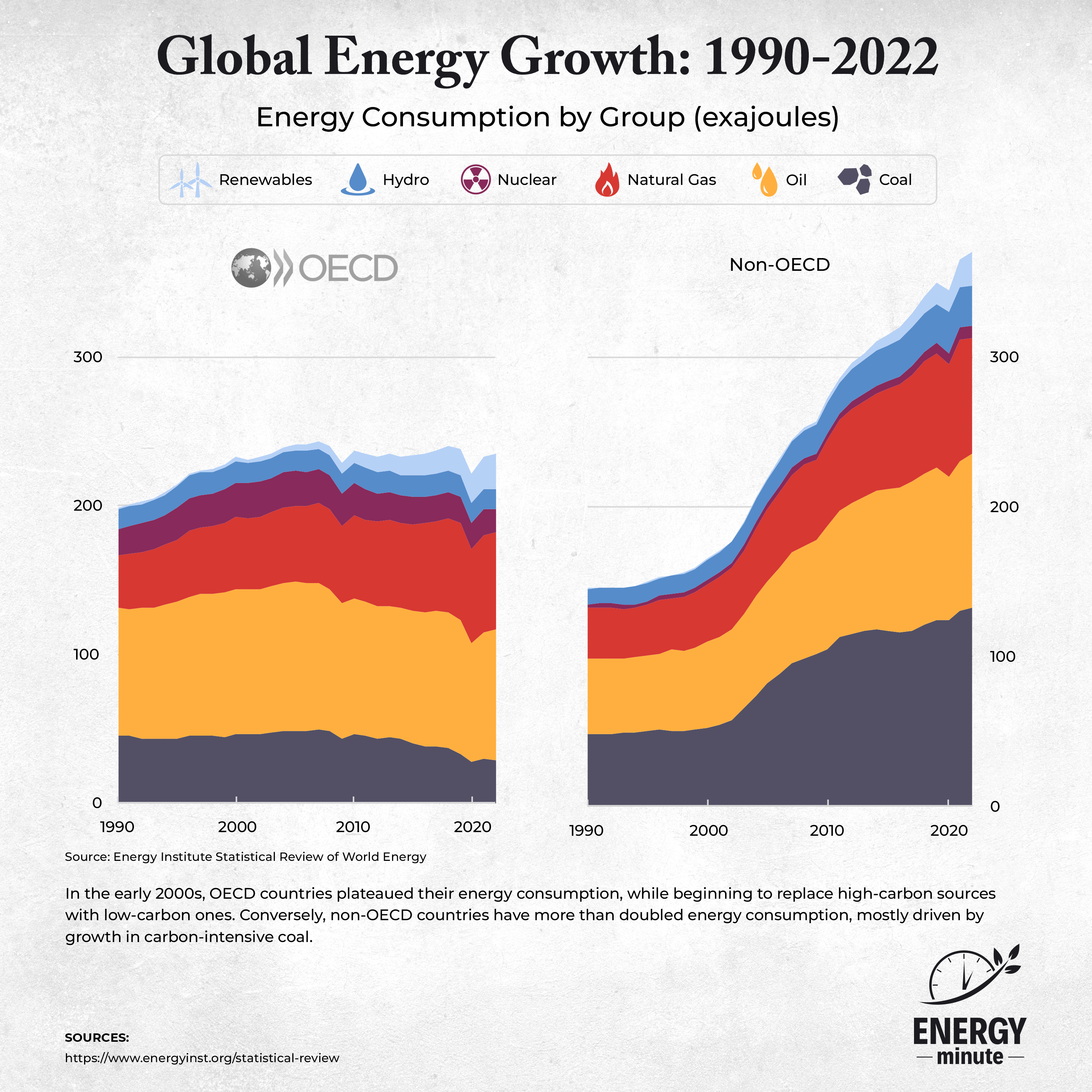Global Energy Growth: OECD v. Developing Nations

Energy growth in developed and developing nations since 2000 has followed distinct trajectories due to differences in economic development, energy infrastructure, policies, and population growth.
OECD Nations
Steady or declining energy consumption: Most developed nations have experienced relatively stable or declining energy consumption per capita since 2000. This is partly due to increased energy efficiency measures, the transition to cleaner energy sources, and changes in industrial structure. These countries have also focused on reducing greenhouse gas emissions, which often entails reducing energy consumption.
Renewable energy transition: Developed nations have made significant investments in renewable energy sources, such as wind, solar, and hydropower. These sources have gained prominence as alternatives to fossil fuels.
Energy efficiency programs: Developed nations have implemented comprehensive energy efficiency programs in various sectors, including transportation, industry, and residential buildings. These initiatives aim to optimize energy use and reduce waste.
Technological advancements: Technological innovations, such as the development of more fuel-efficient vehicles, LED lighting, and smart grids, have played a crucial role in curbing energy consumption in developed countries.
Developing Nations
Rapid energy demand growth: Developing nations have witnessed a significant increase in energy consumption since 2000, driven by population growth, urbanization, and economic development. As these countries continue to industrialize and improve living standards, energy demand rises accordingly.
Coal and fossil fuel dependence: Many developing nations have relied heavily on coal and other fossil fuels to meet their energy needs due to their affordability and accessibility.
Energy access challenges: A substantial portion of the population in developing nations still lacks access to modern energy services. Efforts have been made to expand energy access, but progress has been slow in some regions.
Renewable energy adoption: Some developing nations have also made strides in adopting renewable energy sources, especially in regions with abundant solar and wind resources. International partnerships and financing mechanisms have supported renewable energy projects in these areas.
Energy efficiency challenges: Energy efficiency measures are often less prioritized in developing nations, which can result in higher energy consumption for the same level of economic output.




